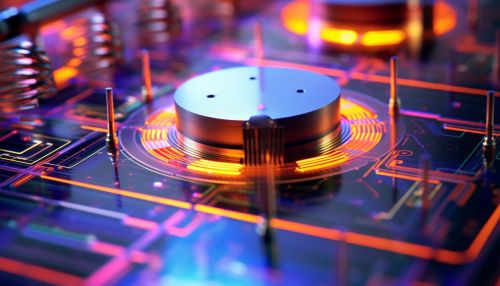Integrated Photonics
Introduction
Integrated photonics, also known as photonic integrated circuits (PICs), is a technology that combines or integrates multiple photonic functions, such as light generation, modulation, amplification, and detection, onto a single chip. This technology is a subset of semiconductor chip fabrication, and it uses materials that can emit, guide, modulate, and detect light. The concept of integrated photonics is similar to that of electronic integrated circuits, but it uses photons instead of electrons for information processing and transmission.
History
The history of integrated photonics dates back to the 1960s, when the first lasers and optical fibers were developed. The idea of integrating multiple optical components onto a single chip was first proposed in the 1970s. However, it was not until the 1980s and 1990s that significant progress was made in this field, with the development of the first practical photonic integrated circuits. The growth of the Internet and the increasing demand for high-speed data transmission in the late 1990s and early 2000s led to a surge in research and development in integrated photonics.
Technology
Integrated photonics technology involves the integration of various optical components, such as lasers, modulators, waveguides, and detectors, onto a single chip. These components are interconnected using optical waveguides, which guide light from one component to another. The chip is typically made of materials that have good optical properties, such as silicon, indium phosphide, or silicon nitride.


Light Generation
In integrated photonics, light is typically generated using a laser. The laser can be integrated onto the chip, or it can be coupled to the chip using an optical fiber. The choice of laser depends on the application, with different types of lasers being used for different applications. For example, semiconductor lasers are commonly used for data transmission, while quantum cascade lasers are used for sensing applications.
Light Modulation
Once the light is generated, it needs to be modulated to carry information. This is typically done using an optical modulator, which changes the intensity, phase, or polarization of the light in response to an electrical signal. There are several types of optical modulators, including electro-optic modulators, acousto-optic modulators, and thermo-optic modulators, each with its own advantages and disadvantages.
Light Amplification
In some applications, the light needs to be amplified to overcome losses in the system. This is done using an optical amplifier, which increases the intensity of the light without changing its information content. There are several types of optical amplifiers, including semiconductor optical amplifiers, erbium-doped fiber amplifiers, and Raman amplifiers.
Light Detection
Finally, the light needs to be detected and converted back into an electrical signal. This is done using a photodetector, which generates an electrical current in response to the incoming light. There are several types of photodetectors, including photodiodes, avalanche photodiodes, and photomultipliers.
Applications
Integrated photonics has a wide range of applications, including telecommunications, data communications, sensing, and computing. In telecommunications and data communications, photonic integrated circuits are used to transmit and receive high-speed data over long distances. In sensing, they are used to detect various physical, chemical, and biological parameters. In computing, they are used to process information at the speed of light, leading to ultra-fast and energy-efficient computers.
Future Trends
The future of integrated photonics looks promising, with several trends shaping its development. These include the increasing integration density, the development of hybrid and heterogeneous integration techniques, the use of new materials and structures, and the expansion into new application areas.
